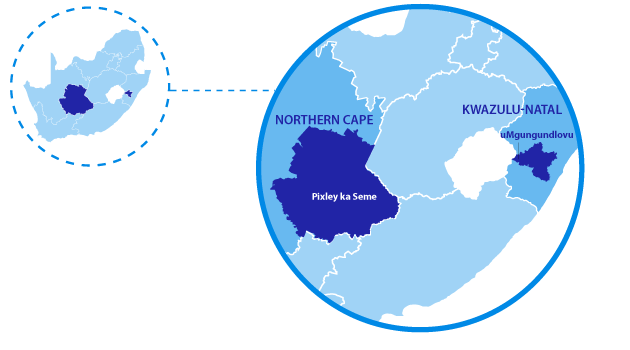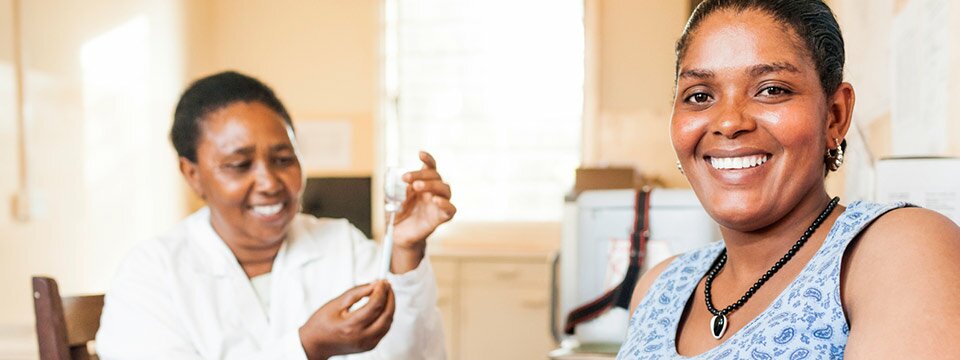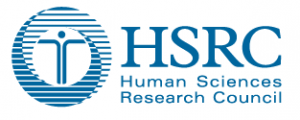About HealthRise South Africa Program
THE NCD CHALLENGE IN SOUTH AFRICA
According to the World Health Organization (WHO), NCDs account for approximately 43% of total deaths in South Africa. More than 33.7% of the South African population has raised blood pressure and 31.3% has diabetes, and the prevalence of these diseases is growing. In 2009, the burden of NCDs in South Africa was noted to be on the rise in rural communities and was disproportionately affecting poor people living in urban settings, which resulted in higher demands for chronic care. In South Africa, NCDs are estimated to account for 43% of total deaths and the probability of premature mortality due to NCDs in 27%. A disproportionate toll is taken on those who cannot afford care, cannot physically access care, or have limited knowledge of their condition.
According to the South African National Health and Nutrition Examination Survey (SANHANES), of the four NCDs listed, respondents were most likely to self-report a family history of high blood pressure (30.9%) followed by family history of high blood sugar (20.7%), while fewer respondents reported a family history of stroke (8.9%) and heart diseases (heart attack, angina, chest pain; 7.6%). Female respondents were significantly more likely than males to report a family history of high blood pressure, 34.1% and 27.3%, and of stroke, 10% and 7.5%, respectively. Among both males and females, the reported rate of all NCDs tended to increase with age. The age groups with the highest rate were 65 years of age and older, 55–64 years of age and 45–54 years of age.
According to the Department of Health, South Africa, the attainment of the overall health sector goal of “a long and healthy life for all” through prevention and control of non-communicable diseases requires implementation of three major components: 1) Prevention of NCDs and promotion of health and wellness at population, community and individual levels. 2) Improved control of NCDs through health systems strengthening and reform. 3) Monitoring NCDs and their main risk factors and conducting innovative research. There are also important roles for non-governmental organization and the private sector in reducing NCDs. Identifying individuals at risk and assisting them to change their behavior is an important strategy to prevent NCDs.
HEALTHRISE SOUTH AFRICA PROGRAM OVERVIEW
To address the growing burden of CVD and diabetes in South Africa, the HealthRise South Africa program is implementing community-based interventions in Umgungundlovu, KwaZulu-Natal, and Pixley Ka-Seme, Northern Cape.
HealthRise Partner, IHME, conducted a comprehensive needs assessment to in the districts of Pixley Ka-Seme and Umgungundlovu to identify access-related barriers, service delivery gaps, and to identify supply-side and demand-side barriers across the Continuum of Care. The HealthRise South Africa program also held discussions with local stakeholders to better understand the gaps and barriers in NCD detection, treatment and care in the selected districts in KwaZulu-Natal and the Northern Cape Provinces. These efforts revealed the following:
- Almost half of adults have high blood pressure and 8% have diabetes.
- Many individuals are unaware of their condition: Over 50% of those with hypertension and 20% of diabetes individuals are undiagnosed.
- Diagnosis does not always lead to control of a condition: Less than one third of those in care for hypertension and just over one half of those enrolled in diabetes treatment are meeting treatment targets
- Women are at a greater risk for CVD and diabetes, with almost double the prevalence of overweight and obesity of men. A lower proportion of women than men successfully control their blood sugar levels.
- Underserved populations often do not seek screening and diagnoses or achieve treatment targets due to limited awareness of the disease risks and symptoms. Meanwhile, primary health care facilities are under-resourced and overburdened, supplies are limited and costly, and providers often lack time and resources to counsel and monitor their chronic patients.
Map highlighting target districts in South Africa

HEALTHRISE SOUTH AFRICA DEMONSTRATION PROJECTS
Demonstration Program Grants
In February 2016, the HealthRise South Africa program awarded grants to two local partners to implement the demonstration projects: Expectra Health Solutions and Project HOPE.
HealthRise is strengthening health care delivery and extending care into community and home-based settings to improve health outcomes for underserved populations. Interventions conducted by HealthRise South Africa partners Expectra Health Solutions and Project HOPE include:
- Training community health workers to provide home-based screening and chronic care linked to supportive supervision and facility-based providers.
- Establishing patient support groups and caregiver/community groups to encourage treatment adherence and healthy behaviors.
- Linking patients to support services within the Departments of Social Development and Health to obtain social grants help address some of the social determinants of health.
 Project HOPE is partnering with provincial, district, and sub-district Departments of Health and Nightingale HOSPICE to implement HealthRise in Pixley Ka Seme district, Northern Cape. Project HOPE will be working to link patients to support services within the Departments of Social Development and Health to obtain social grants to help address some of the social determinants of health; establishing patient support groups; and training CHWs to provide home-based screening and chronic care linked to supportive supervision and facility-based providers.
Project HOPE is partnering with provincial, district, and sub-district Departments of Health and Nightingale HOSPICE to implement HealthRise in Pixley Ka Seme district, Northern Cape. Project HOPE will be working to link patients to support services within the Departments of Social Development and Health to obtain social grants to help address some of the social determinants of health; establishing patient support groups; and training CHWs to provide home-based screening and chronic care linked to supportive supervision and facility-based providers.
 Expectra 868 NPC is partnering with the provincial and district Departments of Health to implement HealthRise in three sub-districts in UMgungundlovu, KwaZulu-Natal, South Africa. These areas have high rates of poverty and unemployment and sizable populations with no formal education. Expectra will improve the detection and management of diabetes and cardiovascular disease among these populations through screening campaigns, door-to-door visits for the hard-to-reach, and follow-up at local clinics (or at home if they do not arrive for follow-up and/or treatment).
Expectra 868 NPC is partnering with the provincial and district Departments of Health to implement HealthRise in three sub-districts in UMgungundlovu, KwaZulu-Natal, South Africa. These areas have high rates of poverty and unemployment and sizable populations with no formal education. Expectra will improve the detection and management of diabetes and cardiovascular disease among these populations through screening campaigns, door-to-door visits for the hard-to-reach, and follow-up at local clinics (or at home if they do not arrive for follow-up and/or treatment).
ALIGNMENT WITH LOCAL PRIORITIES AND GOVERNMENT
To date, extensive stakeholder engagement at the national, province and district levels has helped shape the program’s direction. With results from the community assessments, HealthRise South Africa is engaging multi-sector stakeholders to contribute to the design and award of the demonstration projects. The program will work closely with the Department of Health (DOH) as a primary stakeholder to align priorities and support.
CONTACT HEALTHRISE SOUTH AFRICA
Country Program Director




